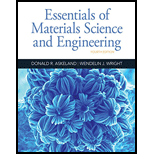
(a)
Interpretation:
The smaller grain size sample should be determined from given two samples using the tensile stress and strain diagrams with labeled figure 1 and 2.
Concept Introduction:
The tensile stress and strain diagram or graph can be obtained through performing a tensile test on the specimen where there is a use of tensile test machines providing controlled uniformly increasing tensile force.
This graph or diagram is useful to understand relationship between the load applied to material and the deformation occurred in the material.
(b)
Interpretation:
The lower temperature should be identified from given two samples tested using the tensile stress and strain diagrams with labeled figure 1 and 2.
Concept Introduction:
The tensile stress and strain diagram or graph can be obtained through performing a tensile test on the specimen where there is a use of tensile test machines providing controlled uniformly increasing tensile force.
This graph or diagram is useful to understand relationship between the load applied to material and the deformation occurred in the material.
(c)
Interpretation:
The tougher sample should be identified from given two samples tested using the tensile stress and strain diagrams with labeled figure 1 and 2.
Concept Introduction:
The tensile stress and strain diagram or graph can be obtained through performing a tensile test on the specimen where there is a use of tensile test machines providing controlled uniformly increasing tensile force.
This graph or diagram is useful to understand relationship between the load applied to material and the deformation occurred in the material.
(d)
Interpretation:
The alloyed sample should be identified from given two samples tested using the tensile stress and strain diagrams with labeled figure 1 and 2.
Concept Introduction:
The tensile stress and strain diagram or graph can be obtained through performing a tensile test on the specimen where there is a use of tensile test machines providing controlled uniformly increasing tensile force.
This graph or diagram is useful to understand relationship between the load applied to material and the deformation occurred in the material.
(e)
Interpretation:
Less hard sample should be identified from given two samples tested using the tensile stress and strain diagrams with labeled figure 1 and 2.
Concept Introduction:
The tensile stress and strain diagram or graph can be obtained through performing a tensile test on the specimen where there is a use of tensile test machines providing controlled uniformly increasing tensile force.
This graph or diagram is useful to understand relationship between the load applied to material and the deformation occurred in the material.
(f)
Interpretation:
The given stress and strain curve should be identified whether it is true stress-strain curve or engineering stress-strain curve.
Concept Introduction:
The tensile stress and strain diagram or graph can be obtained through performing a tensile test on the specimen where there is a use of tensile test machines providing controlled uniformly increasing tensile force.
The engineering stress-strain graph is also represents the strength of materials along with an acceptance test for the given specification of materials.
(h)
Interpretation:
The sample with higher shear yield strength should be identified from given two samples tested using the tensile stress and strain diagrams with labeled figure 1 and 2.
Concept Introduction:
The tensile stress and strain diagram or graph can be obtained through performing a tensile test on the specimen where there is a use of tensile test machines providing controlled uniformly increasing tensile force.
This graph or diagram is useful to understand relationship between the load applied to material and the deformation occurred in the material.
Trending nowThis is a popular solution!

Chapter 6 Solutions
Essentials Of Materials Science And Engineering
 MATLAB: An Introduction with ApplicationsEngineeringISBN:9781119256830Author:Amos GilatPublisher:John Wiley & Sons Inc
MATLAB: An Introduction with ApplicationsEngineeringISBN:9781119256830Author:Amos GilatPublisher:John Wiley & Sons Inc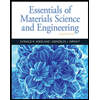 Essentials Of Materials Science And EngineeringEngineeringISBN:9781337385497Author:WRIGHT, Wendelin J.Publisher:Cengage,
Essentials Of Materials Science And EngineeringEngineeringISBN:9781337385497Author:WRIGHT, Wendelin J.Publisher:Cengage, Industrial Motor ControlEngineeringISBN:9781133691808Author:Stephen HermanPublisher:Cengage Learning
Industrial Motor ControlEngineeringISBN:9781133691808Author:Stephen HermanPublisher:Cengage Learning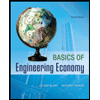 Basics Of Engineering EconomyEngineeringISBN:9780073376356Author:Leland Blank, Anthony TarquinPublisher:MCGRAW-HILL HIGHER EDUCATION
Basics Of Engineering EconomyEngineeringISBN:9780073376356Author:Leland Blank, Anthony TarquinPublisher:MCGRAW-HILL HIGHER EDUCATION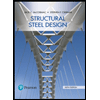 Structural Steel Design (6th Edition)EngineeringISBN:9780134589657Author:Jack C. McCormac, Stephen F. CsernakPublisher:PEARSON
Structural Steel Design (6th Edition)EngineeringISBN:9780134589657Author:Jack C. McCormac, Stephen F. CsernakPublisher:PEARSON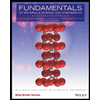 Fundamentals of Materials Science and Engineering...EngineeringISBN:9781119175483Author:William D. Callister Jr., David G. RethwischPublisher:WILEY
Fundamentals of Materials Science and Engineering...EngineeringISBN:9781119175483Author:William D. Callister Jr., David G. RethwischPublisher:WILEY





